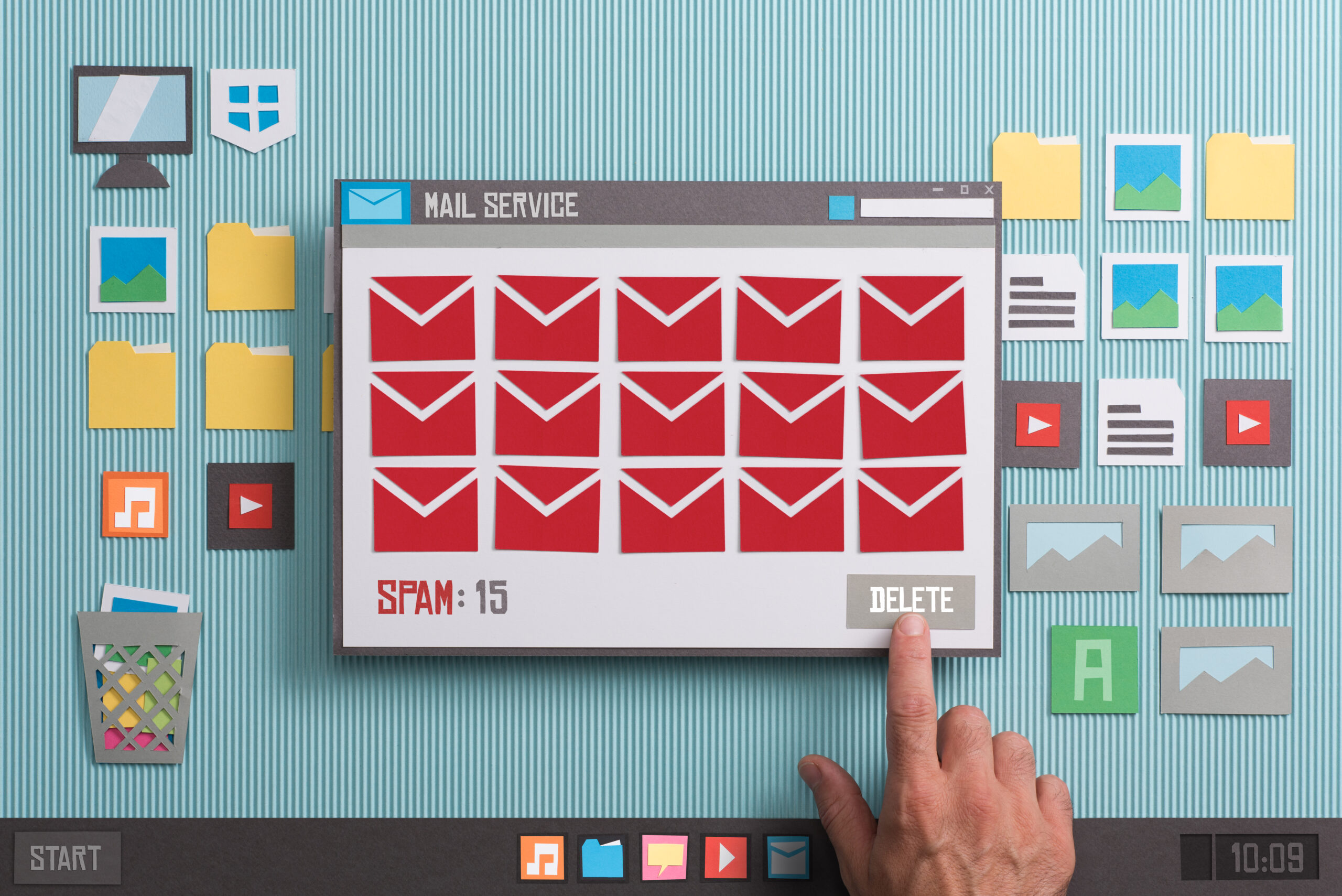With the innovation of today’s technologies comes the responsibility of managing the end-of-life cycles for your company’s electronic devices. Correct IT asset disposition (ITAD) is the most effective way to safeguard your business information when your electronics have reached their end. The key is to follow best practices for your ITAD process.
Organizations constitute IT assets as any hardware, software, or information that is of value to the company. IT assets play pivotal roles in most businesses today, from desktops and office phones to servers and routers. That’s why it is so important to manage the entire lifecycle of these assets with great care.
Neglecting this crucial aspect can lead to significant risks, including data breaches, environmental harm, and legal repercussions. In this blog, we’ll discuss the best ITAD processes, guiding organizations on the path to responsible, secure, and sustainable practices. Let’s dive in!
Best Practices to Follow for IT Asset Disposal Procedures
Following these best practices for your ITAD process not only helps mitigate risks related to data breaches but also saves your company money. Without further ado, here are some of the best practices for your IT asset disposal procedures.
1. Remove Obsolete or Redundant Assets
The removal of obsolete assets streamlines business operations and also mitigates potential security risks associated with outdated technology. This practice safeguards against data breaches and sets the foundation for a comprehensive IT asset management strategy.
By embracing a systematic approach to identify and retire assets that no longer contribute to the organization’s objectives, businesses pave the way for a leaner, more efficient IT infrastructure.

IT Asset Management
In addition to removing obsolete or redundant assets, a robust IT Asset Management (ITAM) strategy is vital for businesses seeking to maximize operational efficiency and plan strategically for the future. IT Asset Management involves a systematic approach to acquiring, deploying, managing, and retiring IT assets throughout their lifecycle.
This encompasses hardware, software, and associated data, demanding a comprehensive strategy to ensure optimal utilization and cost-effectiveness. It includes the following:
- Conducting comprehensive audits – This involves evaluating hardware and software inventory, understanding usage patterns, and identifying areas where assets can be optimized or retired. Regular audits enable businesses to stay proactive in adapting to technological advancements and industry trends.
- Lifecycle planning – By forecasting technology trends and business needs, organizations can make informed decisions about when to upgrade or retire assets. This foresight minimizes the risks associated with sudden technological obsolescence and ensures a smooth transition to newer, more efficient solutions.
- Cost optimization – Managing software licenses, avoiding over-provisioning of hardware, and minimizing downtime through proactive maintenance help businesses significantly reduce IT-related expenses. Moreover, a well-structured ITAM strategy contributes to efficient budget allocation, ensuring that resources are allocated where they are needed most.
- Regulatory compliance – Businesses must adhere to various laws and standards governing data protection, environmental sustainability, and IT asset disposal. By integrating compliance considerations into ITAM practices, organizations minimize legal risks and contribute to a responsible and ethical corporate image.
2. Conduct Asset Tracking
Conducting thorough asset tracking is an essential component of a comprehensive IT asset management strategy. To ensure the seamless monitoring of the entire lifecycle of IT assets, organizations should implement robust asset-tracking systems. These systems go beyond just numbering assets. They offer a dynamic approach that captures critical information related to asset location, status, and associated data.
Asset tracking not only enhances operational efficiency but also serves as a strategic tool for optimizing resource allocation and preventing the inadvertent use or retention of outdated technology.
By maintaining a real-time record of asset movements and status changes, businesses can make informed decisions about maintenance, upgrades, and secure disposal of assets at the end of their lifecycle. Let’s discuss some real-life examples that show the importance of asset tracking.
Real-Time Location Monitoring
Example: A multinational corporation uses GPS-enabled asset tracking systems to monitor the location of laptops and mobile devices across its global offices. This real-time data allows the IT department to quickly locate and recover misplaced or lost devices.
Therefore, it prevents potential security risks associated with sensitive corporate information.

Status and Condition Tracking
Example: An educational institution implements an asset tracking system to monitor the status and condition of classroom computers. This system records information such as hardware health, software updates, and usage patterns.
Moreover, it enables the IT department to proactively schedule maintenance and upgrades, thus ensuring optimal performance for both students and educators.
End-of-Life Planning
Example: A healthcare provider employs asset tracking to monitor the lifecycle of medical equipment. As devices near the end of their operational life, the organization uses this data to plan for secure disposal.
This is crucial because it ensures compliance with regulatory requirements for the disposal of sensitive medical information and minimizes environmental impact.
3. Keep Devices Secure
Now, this may seem like common sense, but it is a vital part of the ITAD process to securely store your assets. It involves making sure devices are physically secure and access is controlled to keep data safe from the time a device is retired until it’s disposed of.
- Physical security measures: Establish secure storage areas equipped with restricted access and surveillance measures to prevent the mishandling of assets. Securing these designated spaces mitigates the risk of data breaches that could occur through unauthorized physical access to devices containing sensitive information.
- Access controls: This involves restricting access to authorized personnel only, preventing inadvertent or malicious data breaches. By using methods like passwords, fingerprints, or smart cards, organizations add an extra layer of protection to prevent unauthorized access or tampering with data on retired devices.
- Secure storage protocols: Devices awaiting disposal should be stored in locked cabinets or secure rooms with limited access. Additionally, maintaining an updated inventory of devices in secure storage aids in tracking and managing the assets effectively.

4. Destroy Data Properly
When considering the disposal of IT assets, a critical aspect is the proper destruction of data to prevent any potential leakage or compromise of sensitive information. This involves employing the following secure data destruction methods. Moreover, each method ensures that data is rendered irrecoverable before the final disposal of devices.
Overwriting
Overwriting involves replacing existing data on a storage device with random information. This method ensures that the original data becomes practically impossible to recover. By overwriting the data multiple times, organizations add an extra layer of security.
Degaussing
Next, degaussing is a method that involves exposing the storage media to a strong magnetic field to erase the data. This technique is commonly used for magnetic storage devices like hard drives and magnetic tapes. Moreover, it effectively eliminates all traces of data, rendering the device blank and ready for secure disposal.
Physical Destruction
Finally, physical destruction entails physically damaging the storage media to make data retrieval impossible. This method is particularly effective for hard drives, SSDs, or other solid-state storage devices. Techniques include shredding, crushing, or disassembling the device.

5. Get a Certified Compliance Report
Obtaining a certified compliance report is a crucial step in the IT asset disposal process. Also, it underscores the commitment to following regulations and industry standards and acts as verifiable documentation of the organization’s compliance efforts. The benefits include:
- Verification of regulatory compliance: This includes adherence to data protection laws, environmental regulations, and any other pertinent standards applicable to the industry. Having a documented certification is invaluable when demonstrating compliance during audits or regulatory assessments. Learn more by reading about electronic disposal laws.
- Proof of responsible practices: The report attests that the disposal process aligns with industry best practices. This safeguards against legal implications and reinforces the organization’s reputation as a responsible steward of sensitive data and environmental resources.
- Enhanced transparency and accountability: Moreover, the report provides a clear and detailed account of the steps taken to comply with regulations, fostering trust among stakeholders, clients, and regulatory bodies. It becomes a valuable tool for transparent communication about the organization’s commitment to ethical and compliant IT asset management.
- Risk mitigation and legal protection: In the event of any legal disputes, having a certified record of compliance demonstrates the organization’s due diligence in adhering to relevant laws. This can be instrumental in mitigating legal risks and ensuring that the organization is well-prepared to address any compliance-related concerns.
Partner with a Certified Recycler for Secure ITAD
When it’s out with the old and in with the new, ensure you protect your data by properly disposing of your old IT assets. The best way to manage your ITAD process and remain compliant is to use a certified vendor.
At Great Lakes Electronics, our comprehensive services ensure a seamless and responsible end to the lifecycle of your technology. We offer electronics recycling, asset management, liability reduction, and robust data security measures. So, you can rest easy knowing your assets are in good hands.
Contact us today for a FREE quote, and let us take care of your recycling needs with the utmost commitment to excellence and environmental sustainability. Choose confidence, choose security – choose Great Lakes Electronics as your trusted partner in IT Asset Disposal.

